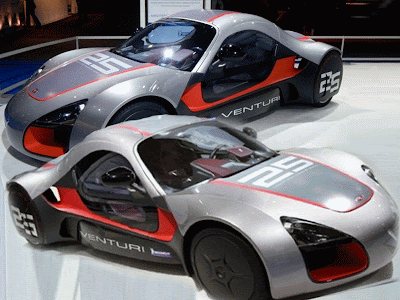At the 2013 Geneva Motor Show, Fisker Automotive are set to reveal their advanced aluminium space frame which is to feature in the stunning Fisker Karma plug-in hybrid electric sports sedan. The Fisker Karma, the world’s first premium plug-in hybrid electric vehicle, will make its Chicago debut at the Chicago Auto Show February 12-21. With the Karma, American automaker Fisker Automotive (www.fiskerautomotive.com) proves that with eco-friendly cars you can enjoy beautiful, distinctive design and thrilling performance with a clear conscience.

Fisker Karma (2013) Plug-in Hybrid
2013 Fisker Karma Preview – 2013 Detroit Auto Show: Just this morning we attended a press conference held by a well-known Italian luxury car company, one that sells fewer than 10,000 cars annually and employs executives who tout the brand’s exclusivity. Maybe they haven’t heard about Fisker Automotive, and in particular, the 2013 Fisker Karma plug-in hybrid.

Despite a projected annual production run of approximately 15,000 units, the Karma comes much closer to the true definition of exclusive thanks the plug-in’s first-to-market status, relatively affordable $80,000 base price, lithium ion battery technology, full-electric range of 50 miles, and a gas/electric fuel economy rating of 100 mpg. That kind of exclusivity will be available from Fisker in late 2013.

The 403hp, four-door Karma plug-in hybrid can go zero to 60mph in six seconds and has a top speed of 125mph, but it can still achieve an annual average of more than 100mpg and drive tailpipe-emission free. Features include a sculpted body, 22-inch wheels, trunk space for two sets of golf clubs, a 10.2-inch haptic touchscreen control center, reclaimed wood trim and an available animal-free interior trim package.

"Our top priorities when we designed the Karma's aluminium space frame were that it have extremely high torsional rigidity and could be easily modified to accept Karma model variants," explained Henrik Fisker, CEO, Fisker Automotive. "We benchmarked some of the world's best cars to create an all-new space frame that will deliver an exhilarating experience behind the wheel." A super-structural tunnel running down the car's centerline acts as the Karma's backbone. The spaceframe is designed around the car's unique Q-DRIVE series-hybrid powertrain.

Behind the rear-drive Karma’s taut skin is a lightweight chassis that places the battery pack in the vehicle’s center to enhance driving dynamics and safety. Fisker says its plug-in hybrid sports sedan will hit 60 mph in 5.8 seconds and travel up to 50 miles on electric power alone; with a supplemental four-cylinder gasoline engine that powers a large generator, its range will extend to 620 miles while returning 100 mpg. When plugged into a 110-volt household outlet, the Karma fully recharges in eight hours, using a 220-volt outlet will get the job done in three hours, and a solar roof panel aids with trickle charging while the Karma is parked.

The Karma is a series Plug-in Hybrid Electric Vehicle (PHEV) powered by a lithium-ion battery and an efficient 2.0-liter range-extending gas engine. The engine only turns a generator, which sends electricity to two electric traction motors attached to the rear differential. The Karma has a 300-mile range with a full battery charge and a full tank of gas. The first 50 miles are electric-only and emission free.

The battery can be recharged in less than six hours using the same 220v household current that powers some major appliances. The Karma can also be charged using standard 110v power from any electrical outlet.

Fisker Automotive’s first car is the Fisker Karma, the world’s first production Plug-in Hybrid Electric Vehicle (PHEV). The four-door Karma will be followed by two variants and a second line of lower cost, high volume premium green automobiles by 2013.































